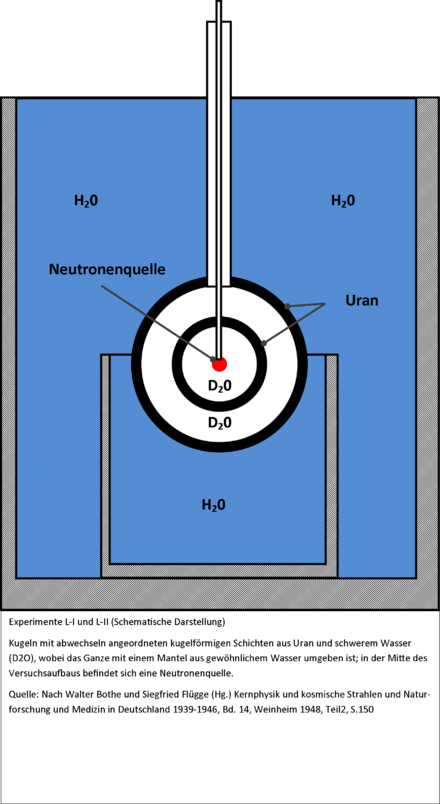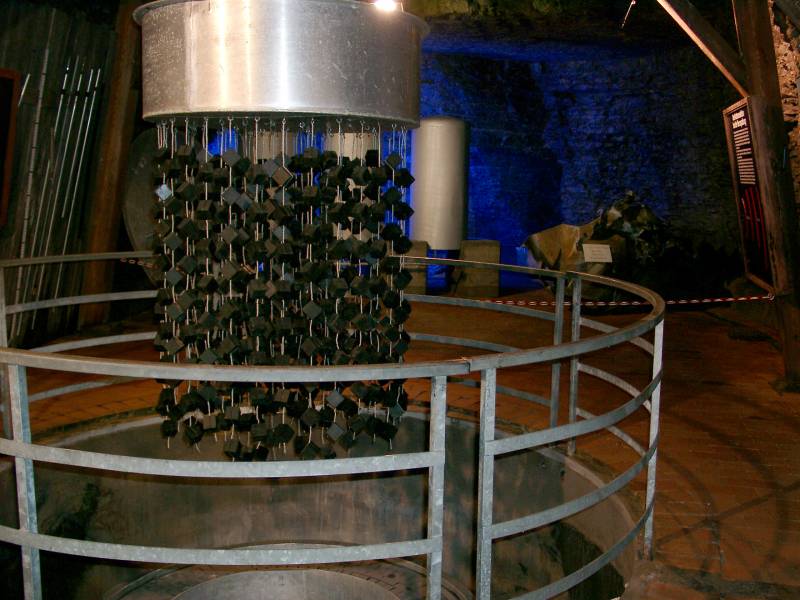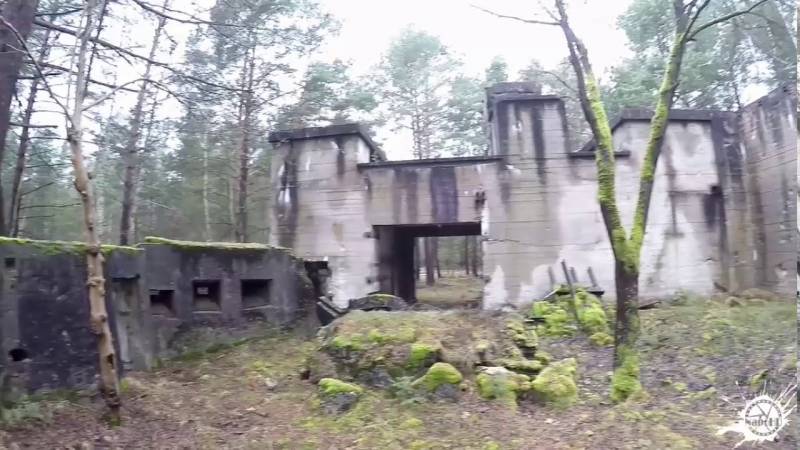Uranprojekt Third Reich: power reactor and fusion device
History The Third Reich’s uranium project, as it is usually presented, reminds me personally of a book with torn pages. All of it appears to be a history of continuous failures and failures, a program with obscure goals and a waste of valuable resources. In fact, there is a certain narrative about the German atomic program, which is illogical, in which there are significant inconsistencies, but which is heavily imposed.
However, some of the information that could be found in publications, including relatively recent studies on the history of German military-technical developments, allows us to look at the German uranium project in a completely different way. The Nazis were primarily interested in a compact energy reactor and thermonuclear weapon.
Power reactor
Guenther Nagel’s extensive and German-quality work Wissenschaft für den Krieg, which contains more than a thousand pages, based on rich archival material, provides very interesting information on how physicists of the Third Reich imagined the use of atomic energy. The book deals mainly with the secret work of the research department of the Department of Land Arms, which also worked on nuclear physics.
Since 1937, in this department, Kurt Dibner conducted research in the field of initiation of detonation of explosives using radiation. Even before the first artificial fission of uranium was carried out in January 1939, the Germans tried to apply nuclear physics to military affairs. The Department of Land Forces immediately became interested in the reaction of uranium fission, which launched the German uranium project and first of all set the task for scientists to determine the scope of atomic energy use. This was given by Karl Becker, head of the Department of Land Forces, president of the Imperial Research Council and artillery general. The instruction was carried out by theoretical physicist Siegfried Flygge, who in July 1939 drew up a report on the use of atomic energy, drew attention to the enormous energy potential of a fissile atomic nucleus and even drew up a sketch of a “uranium machine,” that is, a reactor.
The construction of the "uranium machine" formed the basis of the Third Reich uranium project. The Uranium Engine was a prototype of an energy reactor, not a production reactor. Usually, this circumstance is either ignored within the framework of the narrative on the German nuclear program, created mainly by the Americans, or is greatly underestimated. Meanwhile, the issue of energy for Germany was a crucial issue in view of the acute shortage of oil, the need to produce motor fuel from coal, and significant difficulties in the extraction, transportation and use of coal. Therefore, the very first glimpse of the idea of a new energy source inspired them very much. Gunter Nagel writes that it was supposed to use the “uranium machine” as a stationary source of energy in industry and in the army, and to install it on large warships and submarines. The latter, as can be seen from the epic battle of the Atlantic, was of great importance. The boat reactor turned the boat from a diving into a truly submarine, and made it much less vulnerable to anti-submarine forces of the opponents. The nuclear boat did not need to float to charge the batteries, and its radius of action was not limited by the fuel supply. Even one boat with a nuclear reactor would be very valuable.
But the interest of German designers in the nuclear reactor was not limited to this. In the list of machines on which they thought to install the reactor, there were, for example, Tanks. In June 1942, Hitler and the Reich Minister of Arms Albert Speer discussed a project of a "large combat vehicle" weighing about 1000 tons. Apparently, the reactor was intended specifically for this kind of tank.
Also, rocketers became interested in the nuclear reactor. In August 1941, a research center in Peenemünde requested the possibility of using a “uranium machine” as a rocket engine. Dr. Karl Friedrich von Weizsäcker replied that this was possible, but faced with technical difficulties. Jet thrust can be created using the decay products of the atomic nucleus or using some substance heated by the heat of the reactor.
So the demand for a nuclear power reactor was significant enough for research institutes, groups and organizations to launch work in this direction. Already in early 1940, three projects began to build an atomic reactor: Werner Heisenberg at the Kaiser Wilhelm Institute in Leipzig, Kurt Dibner at the Department of Land Forces near Berlin and Paul Hartek at the University of Hamburg. These projects had to divide among themselves the available reserves of uranium dioxide and heavy water.
Judging by the available data, Heisenberg managed to assemble and launch the first demonstration model of the reactor at the end of May 1942. 750 kg of uranium metal powder together with 140 kg of heavy water were placed inside two firmly screwed aluminum hemispheres, that is, inside an aluminum ball that was placed in a container of water. At first, the experiment went well; an excess of neutrons was noted. But on June 23, 1942, the ball began to overheat, the water in the tank began to boil. The attempt to open the ball was unsuccessful, and in the end the ball exploded, scattering uranium powder in the room, which immediately caught fire. The fire was put out with great difficulty. At the end of 1944, Heisenberg built an even larger reactor in Berlin (1,25 tons of uranium and 1,5 tons of heavy water), and in January-February 1945 he built a similar reactor in the basement in Heigerloch. Heisenberg managed to get a decent neutron yield, but he did not achieve a controlled chain reaction.
Dibner experimented with both uranium dioxide and metallic uranium, building four reactors in succession from 1942 to the end of 1944 in Gottow (west of Kummersdorf, south of Berlin). The first Gottow-I reactor contained 25 tons of uranium oxide in 6800 cubic meters and 4 tons of paraffin as a moderator. G-II in 1943 was already on metallic uranium (232 kg of uranium and 189 liters of heavy water; uranium formed two spheres, inside which heavy water was placed, and the entire device was placed in a container with light water).

Scheme of the experimental dibner reactor
The G-III, built later, was distinguished by its compact core size (250 x 230 cm) and large neutron yield; its modification in early 1944 contained 564 uranium and 600 liters of heavy water. Dibner consistently worked out the design of the reactor, gradually approaching the chain reaction. Finally, he succeeded, however, with a surplus. The G-IV reactor in November 1944 crashed: the boiler burst, the uranium partially melted, and the employees were greatly irradiated.
From the known data, it becomes quite obvious that German physicists tried to create a pressurized water reactor in which an active zone of metallic uranium and heavy water would heat the light water surrounding it, and then it could be fed to a steam generator or directly to a turbine.
They immediately tried to create a compact reactor suitable for installation on ships and submarines, which is why they chose metallic uranium and heavy water. They apparently did not build a graphite reactor. And it was not at all due to Walter Bothe's mistake or due to the fact that Germany could not produce high purity graphite. Most likely, the graphite reactor, which would be technically simpler to create, turned out to be too large and heavy to be used as a ship power plant. In my opinion, abandoning the graphite reactor was a deliberate decision.
The attempts to create a compact energy reactor were also most likely associated with uranium enrichment. The first isotope separation device was created in 1938 by Klaus Clusius, but his “dividing tube” was not suitable as an industrial design. In Germany, several isotope separation methods have been developed. At least one of them has reached industrial scale. At the end of 1941, Dr. Hans Martin launched the first centrifuge for the separation of isotopes, and on this basis a plant for the enrichment of uranium began to be built in Kiel. Her story in Nagel’s presentation is rather short. It was bombed, then the equipment was transferred to Freiburg, where an industrial installation was built in an underground shelter. Nagel writes that there was no success and the plant did not work. Most likely, this is not entirely true, and probably a certain amount of enriched uranium was nevertheless obtained.
Enriched uranium as a nuclear fuel allowed German physicists to solve the problems of achieving a chain reaction and designing a compact and powerful light-water reactor. Heavy water was still too expensive for Germany. In 1943-1944, after the destruction of the heavy water plant in Norway, the installation was working at the Leunawerke plant, but receiving a ton of heavy water required the consumption of 100 thousand tons of coal for the production of necessary electricity. The heavy water reactor could therefore be used on a limited scale. However, the Germans apparently failed to develop enriched uranium for samples in the reactor.
Attempts to create a thermonuclear weapon
The question of why the Germans did not create and use nuclear weapons is still hotly debated, but, in my opinion, these debates reinforced the influence of the narrative about the failures of the German uranium project than answered this question.
Judging by the available data, the Nazis were very little interested in the uranium or plutonium nuclear bomb, and in particular, made no attempt to create a production reactor for producing plutonium. But why?
First, the German military doctrine did not leave much room for nuclear weapons. The Germans did not seek to destroy, but to seize territories, cities, military and industrial facilities. Secondly, in the second half of 1941 and in 1942, when nuclear projects entered the stage of active implementation, the Germans believed that they would soon win the war in the USSR and secure their dominance on the continent. At this time, even numerous projects were created that were supposed to be implemented after the end of the war. With such sentiments, they did not need a nuclear bomb, or rather, did not think it was necessary; but a boat or ship reactor was needed for future battles in the ocean. Thirdly, when the war began to incline towards the defeat of Germany, and nuclear weapons became necessary, Germany took a special path.
Erich Schumann, the head of the research department of the Department of Land Forces, put forward the idea that you can try to use light elements, such as lithium, for a thermonuclear reaction, and to ignite it without using a nuclear charge. In October 1943, Schumann launched active research in this direction, and physicists subordinate to him tried to create the conditions for a thermonuclear explosion in a cannon-type device, in which two cumulative charges shot towards the barrel, collided, creating high temperature and pressure. According to Nagel, the results were impressive, but insufficient to start a thermonuclear reaction. An implosive regimen was also discussed to achieve the desired results. Work in this direction was discontinued in early 1945.
It may look like a rather strange solution, but he had a certain logic. Technically, they could enrich uranium to weapons-grade quality in Germany. However, the uranium bomb then required too much uranium - to produce 60 kg of highly enriched uranium for an atomic bomb, it took from 10,6 to 13,1 tons of natural uranium.
Meanwhile, uranium was actively absorbed by experiments with reactors, which were considered priority and more important than nuclear weapons. In addition, apparently, metallic uranium in Germany was used as a substitute for tungsten in the cores of armor-piercing shells. In the published minutes of the meetings of Hitler and the Reich Minister of Arms and Ammunition Albert Speer, there is an indication that in early August 1943 Hitler instructed to immediately increase the processing of uranium for core production. At the same time, studies were conducted on the possibility of replacing tungsten with metallic uranium, which ended in March 1944. In the same protocol there is a mention that in 1942 there were 5600 kg of uranium in Germany, obviously, this refers to metallic uranium or in terms of metal. So whether it was or not, it remained unclear. But if at least partially armor-piercing shells were produced with uranium cores, then such a production also had to consume tons and tons of metallic uranium.
This application is also indicated by the curious fact that the production of uranium was launched by Degussa AG at the beginning of the war, before the deployment of experiments with reactors. Uranium oxide was produced at a plant in Oranienbaum (at the end of the war it was bombed, and now it is a zone of radioactive contamination), and metallic uranium was produced at a plant in Frankfurt. In total, the company produced 14 tons of uranium metal in powder, plates and cubes. If they released significantly more than was used in the experimental reactors, which suggests that metallic uranium also had another military use.
So in the light of these circumstances, Schumann’s desire to achieve non-nuclear ignition of a thermonuclear reaction is quite understandable. Firstly, the available uranium would not be enough for a uranium bomb. Secondly, uranium was also required by reactors for other military needs.
Why did the Germans fail the uranium project? Because, having barely achieved atom fission, they set themselves the extremely ambitious goal of creating a compact energy reactor, suitable as a mobile power plant. In such a short time and under military conditions, this task was hardly technically feasible for them.


Information